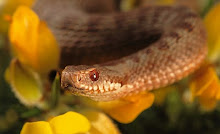The rants have been at a surprisingly low level compared to recent years, except for one local area, or Hamlet as the local press refers to it.
Two gentlemen who live in the quaint little Hamlet, tucked deep into the Forest of Dean recently went to the BBC with their complaints regarding the wild boar.
If you are interested, the article can be found HERE
As they were quick enough to go to the BBC with their concerns and comments, I am sure they will be more than eager to know what other people think.
So here goes...
Now I have no objection to people complaining as this is their right, but to move (recently) into an area, which is about as deep into the forest as you can get, where wild boar are known to be and have been living wild for many years, and giving that the one residence is a pub. Surely they expected wildlife on their doorstep?
To do this, knowing very well that the boar were there and to now ask for the wildlife to be exterminated is basically, in my opinion, sick!
The Forestry Commission are currently culling (managing) the wild boar in the Forest of Dean, but this isn't enough for certain folk, as they are saying "not enough are being killed" and they want them completely eradicated.
What I would like to know is where these people stand when it comes to wildlife ecology? Do they have a PhD in wildlife management, wild boar, wildlife/forest ecology? No they don't, so their venting is based on a pure hatred for this animal and nothing more.
Everyone has a right to live in any area they want to, but if you choose to live in an area where you know "what wildlife is present" and then ask for it to be exterminated because you don't like it and want perfectly manicured Forestry Commission land outside your boundary fence is ridiculous and persecution beyond words.
At least the wild boar has some heavyweights behind them, backing them up in the form of Andy Rouse & Chris Packham who became our Patrons last year.
Andy Says... (photo coming soon)
"The Wild Boar was a native species in the UK for thousands of years playing an intrinsically important role in our landscapes ecology.
Now it has returned to some areas we need to adapt to accept its presence and manifest a rational tolerance to its behaviours and impacts on our lives.
It is a real and very positive agent amongst our impoverished and persecuted fauna.
Please live and let the boar live too"
Chris Says...
 |
| Chris Packham - Patron to UKWBT |
I am sure that the professionals, charged with the management of the wild boar in the Forest of Dean will not bow down and give in to these persecutors and do what is right for the animal and the forest, and manage them correctly.
What I would love more than anything, is for either one of the gentlemen screaming for the boar's blood to ask me to "put up with it" as I would gladly swap my modest town home for a home, deep in the forest surrounded by wildlife. I would be in heaven and I can only but hope that they take me up on the offer, but I don't think this will be happening!
One of the main problems with wild boar hanging around residential areas is down to the fact that people are feeding them and although UKWBT has spend hundreds of pounds on more than one campaign to help see this stopped, unfortunately it is still happening and we are still getting reports of feeding and tame boar throughout the Forest of Dean.
The image below shows a male boar nicknamed (Freddy the Freeloader) at a popular picnic site in the Forest of Dean, walking brazenly amongst locals and tourists during the summer.
Now ask yourself this question. Is this the fault of the animal or is this the fault of the people responsible for habituating him, causing his to lose his natural fear of humans be feeding him?
Remember, every wild animal we tame, we are forever responsible for.
 |
| Freddy - Fed regularly and lost his fear of humans |
Well, I suppose we only have to take this persecution until late January early February and then the grass will grow back and the boar can breath a sigh of relief until the Autumn of 2014, when the rants will start again!
Now, to put you in good spirits here are are a few images from the archives. I haven't been able to get out recently due to a ruptured disk in my back, but with Autumn around the corner at least we have some wonderful colours to look forward to (I'm just glad boar can't climb trees!!!)
 |
| Pond Skater |
.jpg) |
| Melanistic Adder Basking |
 |
| Female Adder Basking |
 |
| Same Female - Macro Portrait |
 |
| Autumn - Forest of Dean |
 |
| Autumn - Forest of Dean |
 |
| Autumn - Forest of Dean |
 |
| Amethyst Deceiver |
 |
| Extra Large Fungi! |
Rob














































